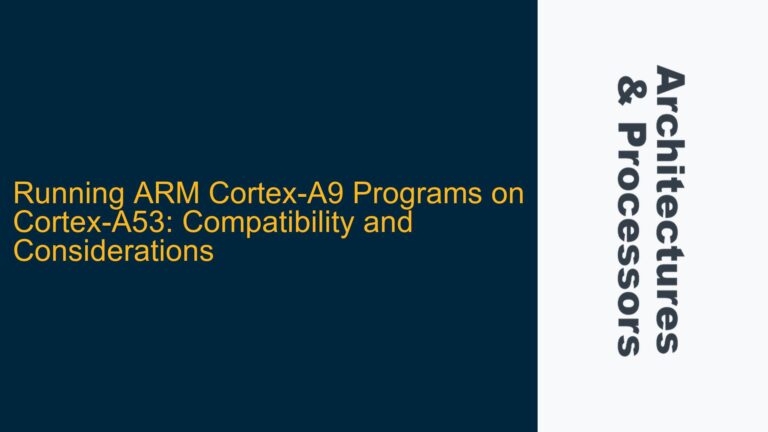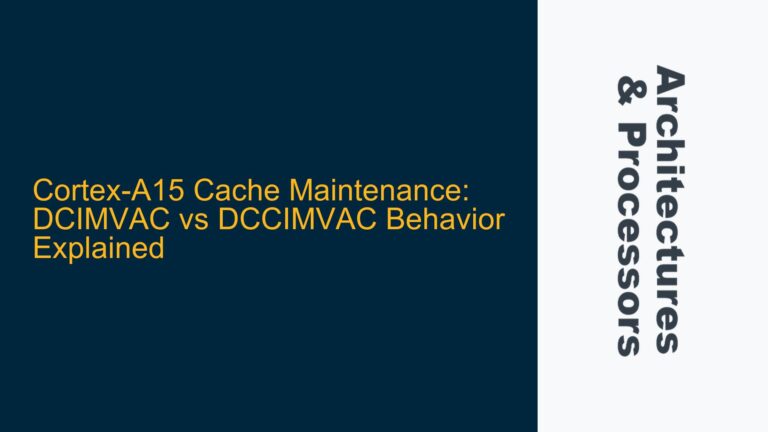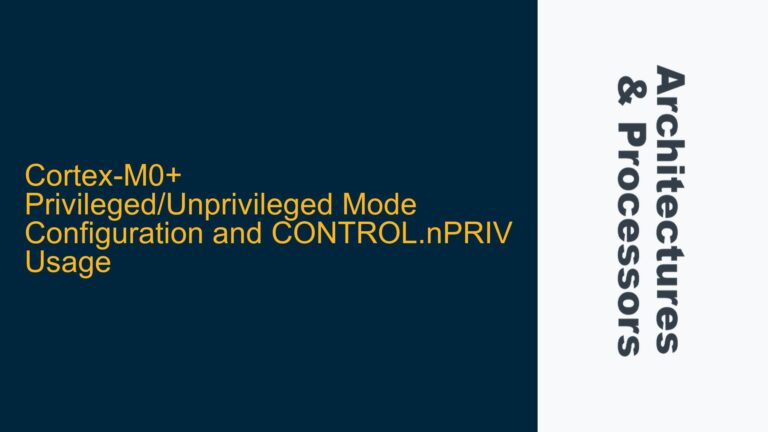Cortex-M0 Signal Requirements and FPGA Pin Limitations
When implementing an ARM Cortex-M0 design in an FPGA, such as the TerAsic DE10-Lite, one of the primary challenges is managing the limited number of input/output (IO) pins available on the FPGA device. The Cortex-M0, being a 32-bit microcontroller, has a rich set of signals that are essential for its operation. These signals include data buses, address buses, control signals, clock inputs, reset signals, and various other peripheral interfaces. The DE10-Lite FPGA, however, has a finite number of IO pins, and when the Verilog design for the Cortex-M0 is synthesized, it may require more pins than the FPGA can provide. This situation often leads to a pin assignment conflict, as reported by Quartus, the FPGA design software.
The Cortex-M0 core, as described in the ARM documentation, has several mandatory signals that must be connected for the core to function correctly. These include the clock signal (HCLK), the reset signal (HRESETn), and the system bus interface signals (HADDR, HWDATA, HRDATA, HWRITE, HSIZE, HBURST, HPROT, HTRANS, HREADY, and HRESP). Additionally, there are optional signals such as those related to the Wake-up Interrupt Controller (WIC), Debug Access Port (DAP), and other peripheral interfaces. The challenge lies in determining which of these signals can be omitted or logically tied off without compromising the core’s functionality.
In the context of the DE10-Lite FPGA, the primary goal is to reduce the number of IO pins required by the Cortex-M0 design while ensuring that the core can still execute a basic ARM program and provide the necessary data/control signals for analysis. This requires a deep understanding of the Cortex-M0 architecture, the role of each signal, and the impact of omitting or modifying these signals on the core’s operation.
Identifying Non-Essential Signals and Their Impact on Core Functionality
To address the pin limitation issue, it is crucial to identify which signals in the Cortex-M0 Verilog design are non-essential for the specific use case of loading and executing a basic ARM program. The Cortex-M0 core has several signals that are either optional or can be logically tied off without affecting the core’s ability to execute instructions and interact with memory.
One of the first signals to consider is the Wake-up Interrupt Controller (WIC) interface. The WIC is an optional component in the Cortex-M0 design that allows the core to wake up from low-power states in response to external interrupts. If the project does not require low-power operation or wake-up functionality, the WIC-related signals can be omitted from the design. These signals include WICEN, WICLOAD, WICCLEAR, and WICMASK. By removing these signals, the number of required IO pins can be reduced without impacting the core’s ability to execute instructions.
Another set of signals that can be considered for omission are those related to the Debug Access Port (DAP). The DAP is used for debugging purposes, allowing developers to access the core’s internal registers and memory. If the project does not require debugging capabilities, the DAP signals, such as SWCLKTCK, SWDIOTMS, SWDO, and SWDOEN, can be omitted. This reduction in signals will further alleviate the pin constraint issue.
Additionally, some of the system bus interface signals may not be necessary for a basic ARM program execution. For example, the HPROT signal, which indicates the protection level of a transfer, may not be required if the program does not involve memory protection or privileged access. Similarly, the HBURST signal, which specifies the burst type of a transfer, may not be needed if the program only performs single transfers. By logically tying off these signals to a constant value, the number of required IO pins can be reduced.
It is also important to consider the clock and reset signals. While these signals are essential for the core’s operation, they may not need to be routed to external IO pins if they can be generated internally within the FPGA. For example, the HCLK signal can be generated using an internal clock divider or a Phase-Locked Loop (PLL) within the FPGA, and the HRESETn signal can be controlled using an internal reset generator. By generating these signals internally, the number of required IO pins can be further reduced.
Implementing Signal Omission and Logical Tie-Off in Verilog Design
Once the non-essential signals have been identified, the next step is to implement the necessary modifications in the Verilog design to omit or logically tie off these signals. This process involves modifying the Verilog code to remove or disable the unnecessary signals and ensuring that the core’s functionality is not compromised.
For the WIC-related signals, the Verilog code should be modified to remove the WICEN, WICLOAD, WICCLEAR, and WICMASK signals from the top-level module. These signals should also be removed from any internal modules that use them. If the WIC functionality is completely removed, the corresponding logic in the core should be disabled or bypassed to prevent any unintended behavior.
For the DAP-related signals, the Verilog code should be modified to remove the SWCLKTCK, SWDIOTMS, SWDO, and SWDOEN signals from the top-level module. These signals should also be removed from any internal modules that use them. If the DAP functionality is completely removed, the corresponding logic in the core should be disabled or bypassed to prevent any unintended behavior.
For the system bus interface signals that are not required, such as HPROT and HBURST, the Verilog code should be modified to tie these signals to a constant value. For example, the HPROT signal can be tied to a value that indicates non-secure, privileged access, and the HBURST signal can be tied to a value that indicates a single transfer. This can be done using Verilog assign statements or by modifying the signal declarations in the top-level module.
For the clock and reset signals, the Verilog code should be modified to generate these signals internally within the FPGA. This can be done using an internal clock divider or a PLL for the HCLK signal and an internal reset generator for the HRESETn signal. The internal clock and reset signals should then be connected to the corresponding inputs of the Cortex-M0 core.
After making these modifications, the Verilog design should be re-synthesized in Quartus to ensure that the number of required IO pins is within the limits of the DE10-Lite FPGA. The design should also be simulated to verify that the core’s functionality is not compromised and that it can still execute a basic ARM program.
In conclusion, optimizing the Cortex-M0 Verilog design for FPGA pin constraints involves identifying non-essential signals, omitting or logically tying off these signals, and implementing the necessary modifications in the Verilog code. By carefully analyzing the core’s signal requirements and making targeted modifications, it is possible to reduce the number of required IO pins while maintaining the core’s functionality. This approach allows the Cortex-M0 design to be successfully implemented on the TerAsic DE10-Lite FPGA, enabling the execution of a basic ARM program and the analysis of data/control signals using a logic analyzer.






